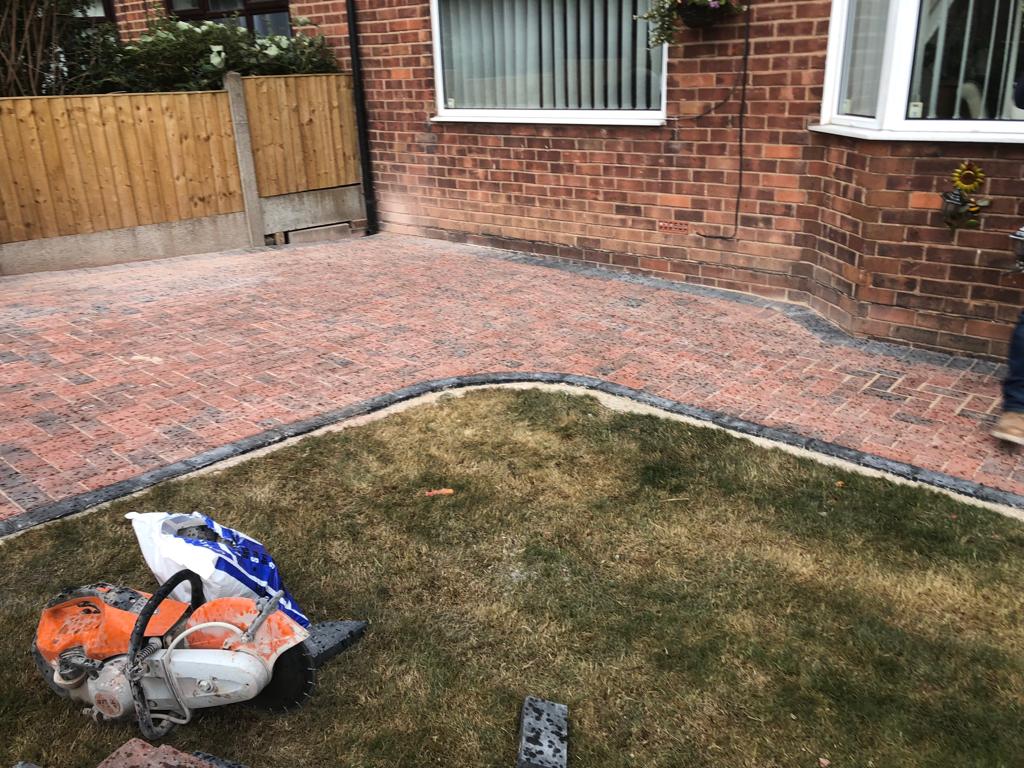Why not improve the front of your home by getting a new driveway laid with a range of choices for the finished surface. You can have block paving, tarmac or a gravel driveway with a range of custom choices on colours, styles and patterns. You can see driveway contractors here.
However, a good base will dictate the depth of which you will go when putting in that base. A weak base will require excavation to around 10 to 12 inches to ensure a solid base. Whilst an existing good base will require only around 3 to 4 inches of a new base.
TARMAC DRIVEWAYS
If you are looking to simply freshen up your driveway and you have a concrete / tarmac driveway, you can opt to have it resurfaced with tarmac for a very affordable cost.
Now, make sure if you are resurfacing your driveway that the driveway can be resurfaced without going above damp-proof levels on your house. This must be avoided at all costs as it can have a detrimental effect on your home.
Here are some tips on finding a driveway service.
If you are looking for a new driveway but are looking to get as much value as possible from your driveway contractor, we recommend opting for a gravel driveway installation.
Gravel driveways are great investments for multiple reasons. Firstly, they are very affordable especially on larger areas when compared to other options.
Secondly, they are completely natural. This means colour retention will stay the entire time. No fading, or colour shifting at any stage.
Thirdly, they are completely permeable which means they comply with SUDS regulations. This means on new driveway installations; you do not need planning permission so long as you use a permeable driveway with a permeable base installation.
Permeable base installations are done by creating a new layered base of coarse stone, Type 1 and Type 4 MOT hardcore at different levels creating a natural drainage layer for water to drain fast and safely away from your driveway without pooling.
For long term investments on a driveway, we recommend opting for block paving, Tegula paving or at the very high end, opt for a natural cobblestone.
These options are the most common today and with the right paving contractor will provide outstanding durability and long-term investment value on your driveway.
BLOCK PAVING
The laying of concrete block paving should always begin from the bottom of any slope, preferably starting from a right angle or a straight edge. Working from several packs at a time is essential when using a mixed size product such as cobble styled paving blocks.
Depending on the type of paving and the pattern you are installing, you will need to either lay it staggered or in a herringbone pattern. We recommend having a line pulled from the 90-degree angle of whatever point you choose.
Lay the paving off the string line in a herringbone pattern and simply keep repeating it line by line until you have filled the area with block paving.
Bordering is normally done after this by going around the paving and adding it to the outside of the paving. We say normally, but sometimes if there will be vehicular traffic going to the edges of the border, we recommend setting them in before you screed the sand with concrete.
Lastly, cut the block paving with a diamond blade saw or a block splitter (you can hire both of these but if you are inexperienced, we recommend the block splitters for safety).
Cut the gaps using a paving pencil or chalk stick to mark the paving exactly to fit the gap between the paving and the border.
Make sure if the block paving has not been in set in concrete and is not being retained by edging, to back up the borders with concrete to ensure it does not move.
Jointing of the block paving is preferably completed in dry periods. We apply kiln dried sand to the block paved area, then brush into the joints using a soft brush, ensuring the joints are filled fully.
You can compact the block paving with a vibrator plate. This is a machine which runs over paving and vibrates down, hard, in a small square area. This is more than strong enough for any type of block paving. For clay bricks, we recommend using a vibrator plate with a rubber mat to protect them.
Once you have compacted the block paving, you should top back up the paving joints with some more kiln dried sand and brush off the entire area.
Finding a skilled recommended driveway installer to lay your driveway or patio.
